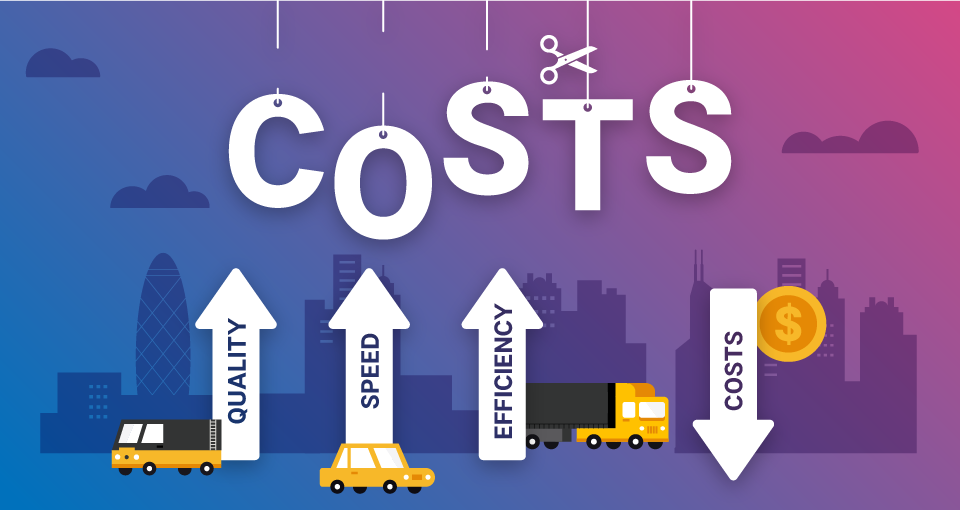In today’s highly competitive global market, optimizing shipping routes has become a critical strategy for businesses looking to reduce costs and enhance efficiency. With the rise of advanced technologies such as artificial intelligence (AI), machine learning, and big data analytics, companies are finding innovative ways to streamline their logistics operations and cut down on transportation expenses. Here’s how optimizing shipping routes can significantly impact cost reduction and operational efficiency.
The Importance of Route Optimization
Optimizing shipping routes is essential for several reasons:
Cost Reduction: Fuel and labor costs are major expenses in logistics. By finding the most efficient routes, companies can minimize travel distance and time, thereby reducing fuel consumption and overtime pay.
Time Efficiency: Faster and more efficient routes mean quicker deliveries, which can improve customer satisfaction and enable businesses to handle more shipments in less time.
Environmental Impact: Optimized routes can help reduce carbon emissions, contributing to sustainability goals and enhancing the company’s green credentials.
Leveraging Advanced Technologies
The integration of advanced technologies is transforming how businesses optimize their shipping routes.
Artificial Intelligence (AI): AI algorithms can analyze vast amounts of data, including traffic patterns, weather conditions, and historical delivery times, to determine the most efficient routes. AI can also predict potential delays and suggest alternative paths in real time.
Machine Learning: Machine learning models learn from past shipping data to continuously improve route recommendations. These models can adapt to changing conditions and provide insights that help logistics managers make informed decisions.
Big Data Analytics: By leveraging big data analytics, companies can gain a comprehensive view of their shipping operations. Analyzing data from various sources enables businesses to identify inefficiencies, predict demand, and plan optimal routes accordingly.
Implementing Multi-Carrier Solutions
Using multiple carriers can offer flexibility and cost savings.
Carrier Comparison: Multi-carrier shipping software allows businesses to compare rates from different carriers and choose the most cost-effective option. This ensures that each shipment uses the best possible route and carrier combination.
Dynamic Routing: Dynamic routing solutions adjust shipping routes in real-time based on current conditions. This adaptability helps avoid delays and reduces the overall cost of shipping.
Real-Time Tracking and Monitoring
Real-time tracking and monitoring tools are crucial for effective route optimization.
GPS Tracking: GPS technology provides real-time location data, enabling businesses to monitor shipments and ensure they stay on the planned route. This visibility helps identify and address any deviations promptly.
Telematics: Telematics systems collect data on vehicle performance and driver behavior. This information can be used to optimize routes and improve fuel efficiency, further reducing costs.
Collaboration and Integration
Collaborative approaches and system integrations enhance route optimization efforts.
Supply Chain Collaboration: Collaborating with suppliers, carriers, and customers can lead to better route planning. Sharing information and aligning schedules can minimize delays and optimize the overall supply chain.
System Integration: Integrating route optimization software with existing enterprise resource planning (ERP) and transportation management systems (TMS) ensures seamless data flow and more efficient logistics management.
Case Studies of Successful Route Optimization
Several companies have successfully implemented route optimization strategies, resulting in significant cost savings and efficiency improvements.
Amazon: By using AI and machine learning, Amazon has optimized its delivery routes, reducing fuel consumption and improving delivery times. The company’s dynamic routing solutions allow for real-time adjustments based on traffic and weather conditions.
UPS: UPS’s ORION (On-Road Integrated Optimization and Navigation) system uses advanced algorithms to determine optimal delivery routes. This system has saved the company millions of gallons of fuel and reduced carbon emissions.
Future Trends in Route Optimization
Looking ahead, several emerging trends are expected to further enhance route optimization efforts.
Autonomous Vehicles: The adoption of autonomous vehicles in logistics can lead to more consistent and efficient route adherence, reducing human error and operational costs.
Blockchain Technology: Blockchain can enhance transparency and traceability in the supply chain, ensuring that route data is accurate and tamper-proof.
Internet of Things (IoT): IoT devices can provide real-time data on vehicle conditions and cargo status, enabling more precise route adjustments and maintenance planning.
Optimizing shipping routes is a powerful strategy for reducing costs and improving efficiency in logistics. By leveraging advanced technologies such as AI, machine learning, and big data analytics, businesses can achieve significant savings and enhance their competitive edge. As the logistics industry continues to evolve, staying ahead of these trends will be crucial for long-term success.

 English
English Tiếng Việt
Tiếng Việt العربية
العربية हिन्दी
हिन्दी Español
Español